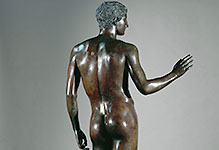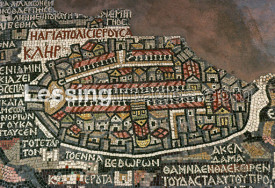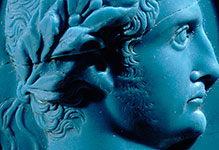
Antiquity
Ancient Egypt, Ancient Greece, Imperial Roman Period, Ancient Middle East.

#03010154
Statue of Inebny, 18th dynasty, around 1450 BCE.Limestone block with incised hi...

#03010155
Head of the cow Hathor, 18th dynasty, around 1450 BCE.The cult statue of Hathor...

#03010156
Fragment of the beard of the Great Spinx (New Kingdom, 14th BCE?). Part of the...

#03010157
Faience ushebti of Seti I, 19th dynasty, around 1290 BCE. The figure wears the...

#03010158
Statue of Ramses II,19th dynasty,around 1250 BCE. The pharaoh is shown wearing...

#03010159
Funerary cloth of Isetnefret, New Kingdom, around 1300- 1070 CE. Isnetfret is s...

#03010160
Limestone ostracon showing a woman suckling a child, probably from Deir el-Medi...

#03010161
Ramses III before the gods of Memphis,20th dynasty,around 1150 BCE.At 42 metres,...

#03010162
Vignette of the Book of the Dead of the priestess Nesitanebtashru, 21st Dynasty,...

#03010163
Coffin of Hor,22nd dynasty,around 850 BCE. The falcon-headed god Horus is shown...

#03010164
Lid of the coffin of Hor,22nd dynasty,around 850 BCE. The falcon-headed god Hor...

#03010165
Coffin of Hor,22nd dynasty,around 850 BCE. The falcon-headed god Horus is shown...





